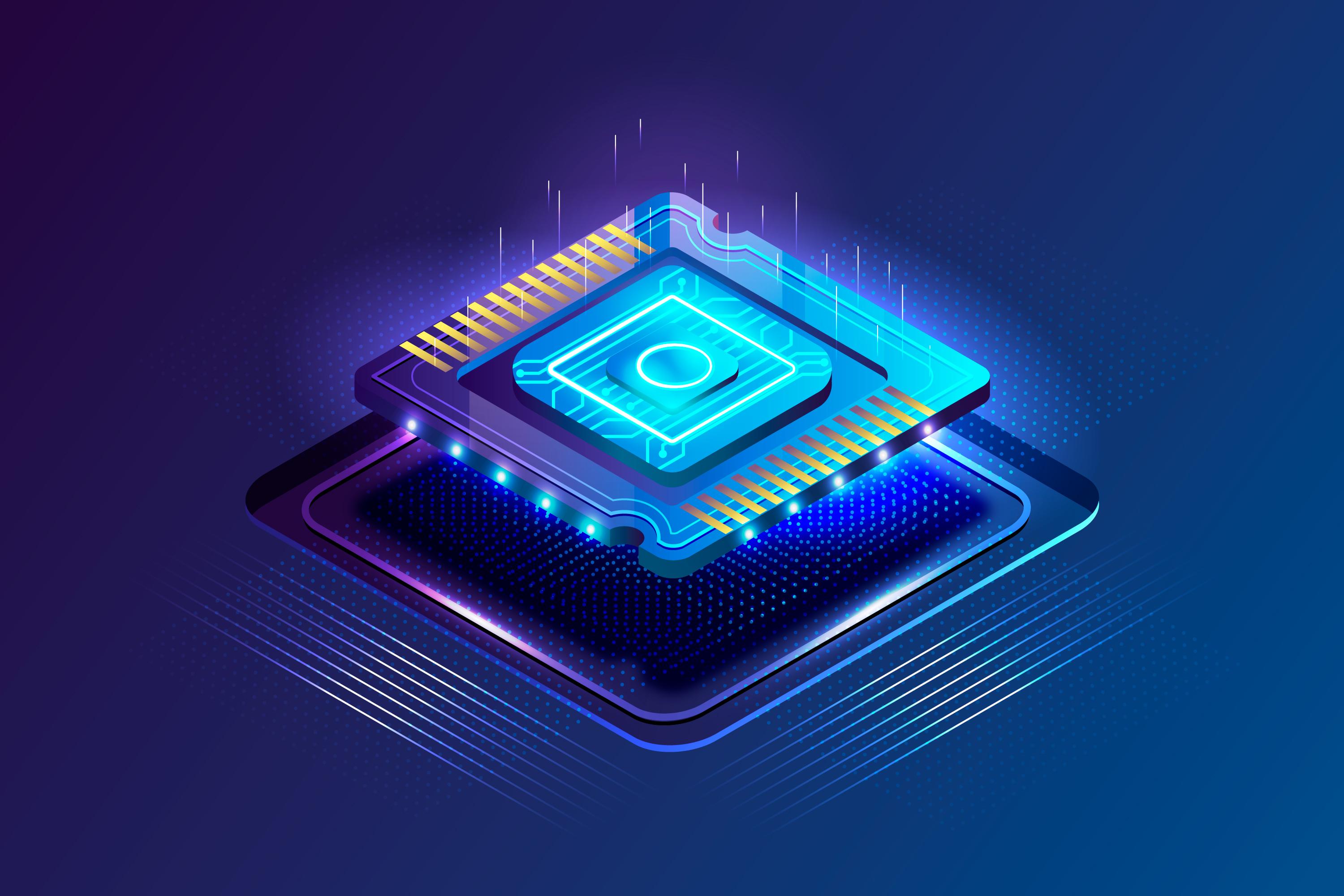Introduction:
The world of Very Large
Scale Integration (VLSI) is a challenging and exciting field, with
multinational corporations (MNCs) constantly on the lookout for talented
individuals. However, the technical interview round can be a daunting hurdle
for many. This blog aims to provide you with a comprehensive guide on how to
tackle tricky VLSI technical interview questions in MNCs, especially in
the Indian context.
1.Understanding VLSI
Before diving into the interview questions, it's crucial to have a solid understanding
of VLSI. VLSI is a process of creating an integrated circuit by combining
thousands of transistors into a single chip. It's the foundation of modern
electronic devices like microprocessors, memory chips, and application-specific
integrated circuits (ASICs).
2.Preparing for the Interview
Preparation is key when it comes to technical interviews. Start by revising the
basics of digital electronics, semiconductor physics, and VLSI design. Brush up
on your knowledge of CMOS technology, as it forms the backbone of modern VLSI
design.
3.Understanding the Interview Process
4.Preparing for the VLSI Technical Interview
Understand the Basics:
- Before diving into the tricky
vlsi interview questions, ensure you have a solid grasp of the
fundamentals. Review key concepts in digital and analog VLSI design,
semiconductor physics, and other relevant areas. A strong foundation will
boost your confidence when facing complex inquiries.
Stay Updated with Industry Trends:
- VLSI is a dynamic field, with
technologies evolving rapidly. Stay abreast of the latest advancements,
industry trends, and emerging technologies. This knowledge not only showcases
your commitment but also equips you to tackle questions related to
cutting-edge developments.
Practice Regularly:
- Practice makes perfect,
especially when it comes to technical interviews. Engage in mock
interviews, solve sample problems, and participate in coding challenges.
This not only sharpens your problem-solving skills but also helps you
become accustomed to the pressure of a real interview scenario.
Review Your Resume:
- Expect questions about your
projects and experiences listed on your resume. Be ready to discuss the
challenges you faced, the solutions you implemented, and the impact of
your work. Linking your experiences to the job requirements demonstrates
your practical understanding of VLSI.
5. Handling Tricky VLSI Interview Questions:
1. Demonstrate Problem-Solving Skills:
- Tricky questions often aim to
evaluate your ability to approach and solve complex problems. Break down
the problem into manageable steps, articulate your thought process
clearly, and demonstrate logical problem-solving. Interviewers are
interested in your approach as much as the final answer.
2. Communication is Key:
- Effective communication is
crucial in a technical interview. Clearly express your ideas, thoughts,
and solutions. Practice articulating complex concepts in a simple and
concise manner. This not only helps you convey your understanding but also
showcases your communication skills.
4. Highlight Collaboration and Teamwork:
- VLSI projects are typically
collaborative efforts. Expect questions that assess your ability to work
in a team. Share instances where you successfully collaborated with
colleagues, resolved conflicts, and contributed to achieving project
milestones.
5. Stay Calm under Pressure:
- tricky
vlsi interview questions
are designed to test your composure and ability to think on your feet. Stay
calm, take a moment to gather your thoughts, and approach the question
systematically. Rushed answers may not showcase your true potential.
6. Foundational Knowledge:
- To excel in any VLSI technical
interview, it's crucial to have a solid understanding of foundational
concepts. Tricky questions may revolve around basic digital design,
semiconductor physics, and CMOS technology. We'll explore key topics
within these areas and provide insights into how to approach and answer
challenging questions.
7. Advanced Concepts and Design Techniques:
- As interviews progress,
candidates are often tested on their proficiency in advanced VLSI concepts
and design methodologies. This section will delve into topics such as
clock domain crossing, power optimization, and layout considerations.
Strategies for tackling intricate questions related to these advanced
concepts will be discussed in detail.
8. Problem-Solving Strategies:
- Tricky VLSI interview questions
are designed not only to assess your knowledge but also your ability to
think critically and solve complex problems. We'll explore effective
problem-solving strategies, including breaking down complex scenarios,
leveraging known principles, and demonstrating a structured approach to
arriving at solutions.
9. Behavioural and Communication Skills:
- Beyond technical prowess, MNCs
also evaluate candidates based on their communication
skills and how well they can articulate their thoughts. We'll
provide tips on conveying technical information clearly and concisely, as
well as addressing questions related to your previous projects and
experiences.
10. Real-world Application:
- MNCs are interested in
candidates who can bridge the gap between theoretical knowledge and
practical application. We'll discuss how to showcase your ability to apply
VLSI concepts in real-world scenarios, drawing on your experiences and
demonstrating the impact of your contributions.
Example of Tricky Interview questions
1.Explain the concept of clock skew and how it can impact the
performance of a VLSI circuit.
Clock skew refers to the variation in arrival times of a clock
signal at different elements. It can cause setup and hold time violations.
Techniques like clock skew scheduling and balancing are used to minimize its
impact on circuit performance.
2.Describe the advantages and disadvantages of using
clock gating in a design.
Clock gating helps in reducing power consumption by disabling the
clock to idle components. However, it introduces additional logic, impacting
area and complexity. Optimizing the trade-off between power savings and area
penalty is crucial in clock gating strategies.
3. What is the significance of metastability in flip-flops, and
how can it be mitigated?
Metastability occurs when a flip-flop receives a setup or hold
time violation, leading to an uncertain output. To mitigate metastability,
proper synchronization techniques such as using two flip-flops in series (2-FF
synchronizer) can be employed to ensure a stable output.
4.Explain the challenges and solutions associated with the routing
of clock signals in a chip.
Challenges in clock routing include skew, delay, and power
consumption. Clock tree synthesis (CTS) is a common solution, involving the
construction of a balanced tree structure with buffers to ensure uniform clock
arrival times, minimizing skew and optimizing performance.
5.Discuss the impact of process variations on VLSI circuit
performance and how it can be addressed.
Process variations result in parameter deviations during
manufacturing, affecting performance. Techniques such as adaptive body biasing,
corner-based design, and statistical static timing analysis (SSTA) are employed
to address the impact of process variations and ensure robust circuit
performance.
6.What are the trade-offs between using a synchronous and
asynchronous design approach in VLSI?
Synchronous design simplifies timing analysis but may lead to
higher power consumption. Asynchronous design offers potential power savings
but introduces challenges in timing analysis and increased complexity. The
choice depends on the specific requirements and constraints of the design.
7.Explain the concept of clock domain crossing (CDC) and the
challenges associated with it.
CDC occurs when signals cross between different clock domains.
Challenges include metastability, data loss, and synchronization issues. Proper
synchronization techniques such as two-flop synchronizers and gray coding can
be applied to handle CDC challenges effectively.
8.Describe the significance of power grid design in VLSI and the
impact of IR drop on circuit performance.
9.What is the role of clock distribution networks, and how can
clock skew be minimized in a large-scale VLSI design?
Clock distribution networks ensure uniform clock arrival times.
Clock skew in large designs can be minimized through clock tree synthesis
(CTS), using balanced trees and inserting buffers strategically to equalize
clock paths and reduce skew.
10.Discuss the impact of electromigration on interconnect
reliability and ways to address it.
Electromigration is the phenomenon of metal atoms moving due to
the passage of current, leading to interconnect degradation. Techniques such as
optimizing wire widths, adding redundant vias, and implementing current-aware
routing algorithms help mitigate electromigration effects and enhance interconnect
reliability.
Conclusion:
Successfully navigating
tricky VLSI technical interview questions in MNCs requires a combination
of technical proficiency, problem-solving finesse, and effective communication.
By following the strategies outlined in this comprehensive guide, you'll be
well-equipped to face the challenges of the vlsi technical interview round with
confidence and emerge victorious in securing your dream position.

VLSI Career Roadmap for Engineering Graduates: Step-by-Step Guide
A complete VLSI career roadmap for engineering graduates. Learn skills, domains, tools, and steps to become a successful semiconductor engineer in the chip design industry.

Title: Top VLSI Career Paths for 2026 Graduates and Best Semiconductor Companies in India
Meta Description: Explore the top VLSI career options for 2026 engineering graduates and discover India’s best semiconductor companies for high-paying jobs. Learn about roles, skills, and top recruites

Why VLSI Engineers Must Care About Side-Channel Attacks, Secure Design, Verification, and Hardware Mitigation
Learn why VLSI engineers must prioritize side-channel attacks, secure design, verification, and mitigation to build trustworthy, resilient, and future-ready hardware systems.

VLSI Skills Every Engineering Graduate Must Learn to Stay Ahead in the Semiconductor Race
Discover the must-learn VLSI skills for engineering graduates to stay ahead in the semiconductor industry. Boost your career with essential chip design and verification skills.
_11zon.jpg)
How Verification Engineers Master Tools and Languages Used in the VLSI Industry
Discover how verification engineers master essential tools, languages, and methodologies in VLSI industry. Learn skills needed to stay competitive and future-ready.
Hours
Copyright 2025 © VLSI Technologies Private Limited
Designed and developed by KandraDigitalCopyright 2025 © VLSI Technologies Private Limited
Designed, Developed & Marketing by KandraDigital
